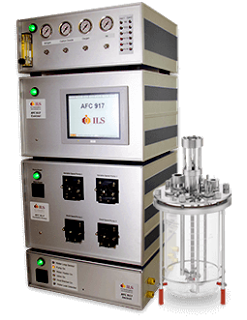 |
PID Process Controller
Courtesy Precision Digital |
In the industrial control sphere, PID stands for "proportional plus integral and derivative control", three actions used together in managing a control loop. Process loop controllers use one, two or all three of these to regulate a process by responding in a prescribed fashion to disturbances in the process variable. PID control is used in a wide variety of applications in industrial control and process system management.
Many types of PID controllers exist on the market and are used for controlling temperature, pressure, flow, and just about every other process variable. Here is a brief explanation of the three actions that make up the PID algorithm, without the math.
 |
| PID Control Loop Diagram |
Proportional Control Action (P): The controller output responds in proportion to an error signal. Think of error as simply the distance between where you are and where you want to be. A larger error value will generate a larger output response from the controller. When the process value (the measured value of what is being controlled) is close to the setpoint, output response is reduced.
Integral Control Action (I): The control system will increase the output if the error is present over a period of time. This is called integral control action. The integral portion of the algorithm helps drive the process value to the setpoint if the process reaches some equilibrium point that is not the setpoint. The purpose of integral action is to provide adequate control response to varying demands of the process. Integral action does not function independently, requiring the inclusion of proportional action too.
Derivative Control Action (D): To achieve a stable process, wide proportional band and low integral action are often needed. Due to these settings, the control system can exhibit too slow a response pattern. If large system disturbances occur over a wide range, additional elements are needed in the control algorithm to provide suitable response. Derivative control action, added to the effect of proportional and integral, provides response to not only the magnitude of deviation, but also the rate of change of the error.
Modern PID loop controllers are often provided with a function that will automatically select the proper constants for the PID parameters. What used to be a very time consuming and tedious job can now be done with the push of a button and allowing the controller to "learn" the process dynamics. PID controllers minimize error and optimize the accuracy of any process.
Share your control challenges and requirements with
product specialists and combine your process knowledge with their product expertise to produce the most effective results.


